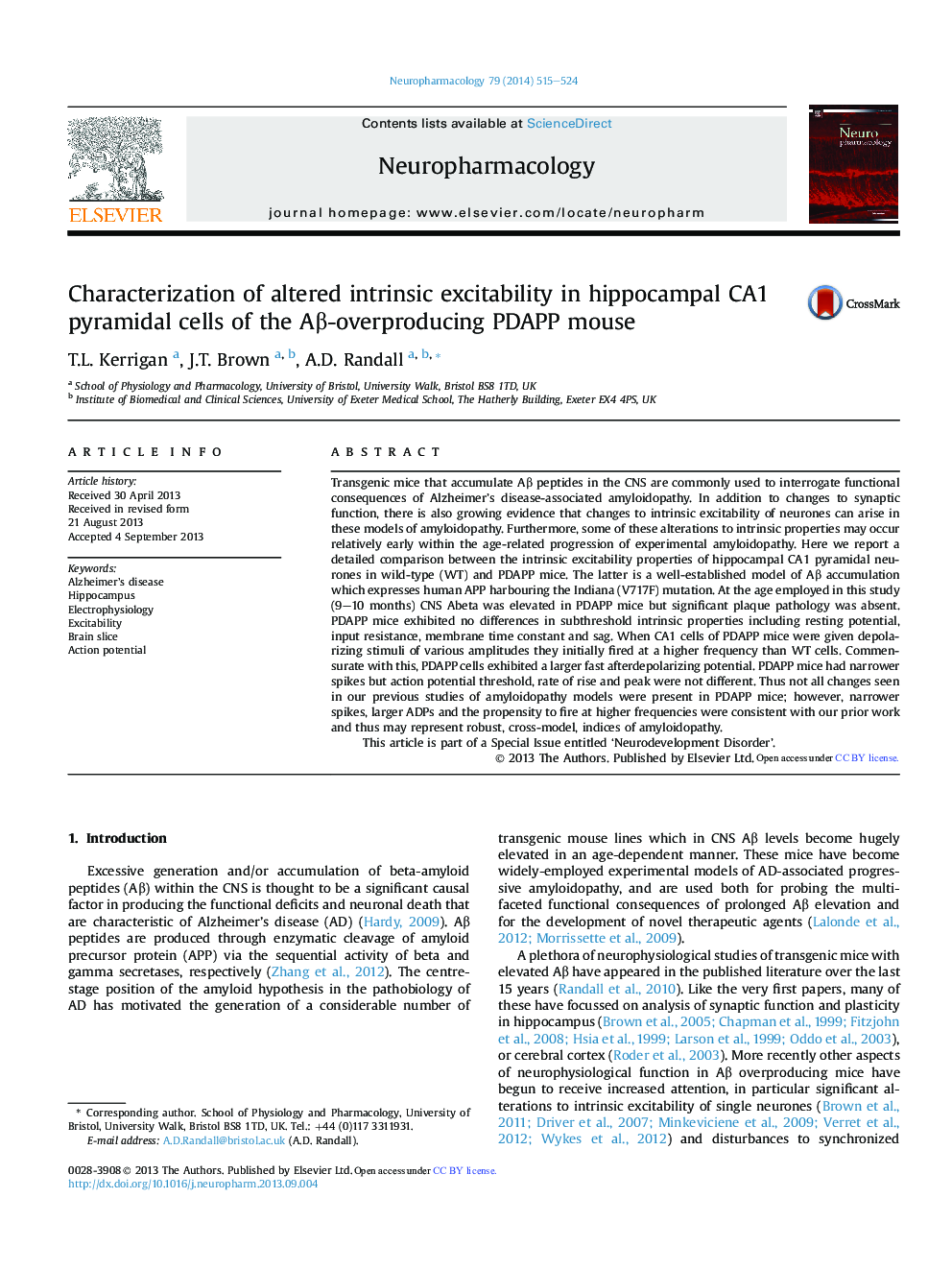| کد مقاله | کد نشریه | سال انتشار | مقاله انگلیسی | نسخه تمام متن |
|---|---|---|---|---|
| 5814662 | 1556635 | 2014 | 10 صفحه PDF | دانلود رایگان |

- Intrinsic excitability of CA1 pyramids in PDAPP mice were compared to controls.
- Subthreshold intrinsic properties were independent of genotype.
- When first depolarized PDAPP cells fired action potentials faster than controls.
- Action potentials in PDAPP mice were narrower than those in controls.
Transgenic mice that accumulate Aβ peptides in the CNS are commonly used to interrogate functional consequences of Alzheimer's disease-associated amyloidopathy. In addition to changes to synaptic function, there is also growing evidence that changes to intrinsic excitability of neurones can arise in these models of amyloidopathy. Furthermore, some of these alterations to intrinsic properties may occur relatively early within the age-related progression of experimental amyloidopathy. Here we report a detailed comparison between the intrinsic excitability properties of hippocampal CA1 pyramidal neurones in wild-type (WT) and PDAPP mice. The latter is a well-established model of Aβ accumulation which expresses human APP harbouring the Indiana (V717F) mutation. At the age employed in this study (9-10 months) CNS Abeta was elevated in PDAPP mice but significant plaque pathology was absent. PDAPP mice exhibited no differences in subthreshold intrinsic properties including resting potential, input resistance, membrane time constant and sag. When CA1 cells of PDAPP mice were given depolarizing stimuli of various amplitudes they initially fired at a higher frequency than WT cells. Commensurate with this, PDAPP cells exhibited a larger fast afterdepolarizing potential. PDAPP mice had narrower spikes but action potential threshold, rate of rise and peak were not different. Thus not all changes seen in our previous studies of amyloidopathy models were present in PDAPP mice; however, narrower spikes, larger ADPs and the propensity to fire at higher frequencies were consistent with our prior work and thus may represent robust, cross-model, indices of amyloidopathy.This article is part of a Special Issue entitled 'Neurodevelopment Disorder'.
Journal: Neuropharmacology - Volume 79, April 2014, Pages 515-524